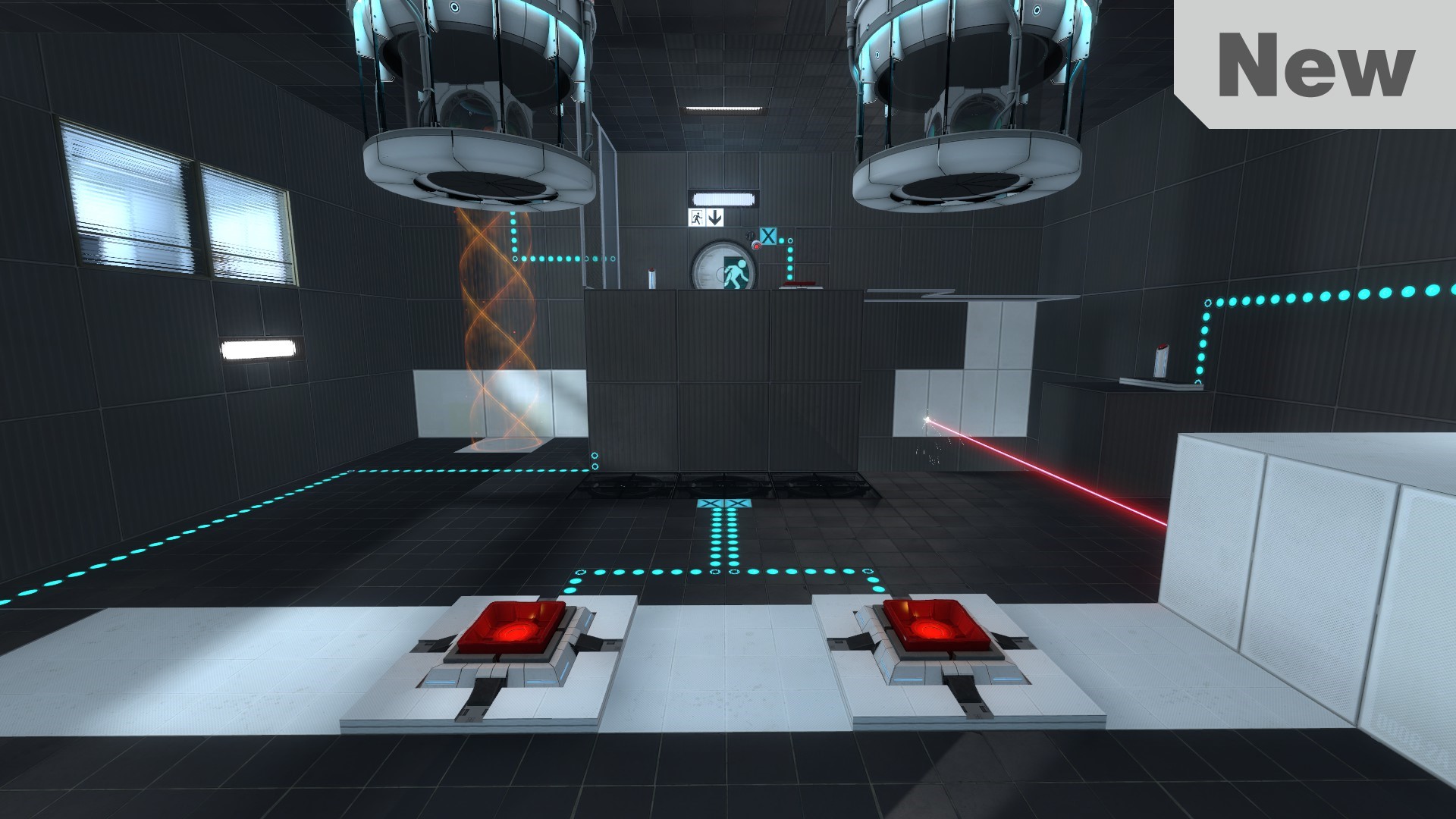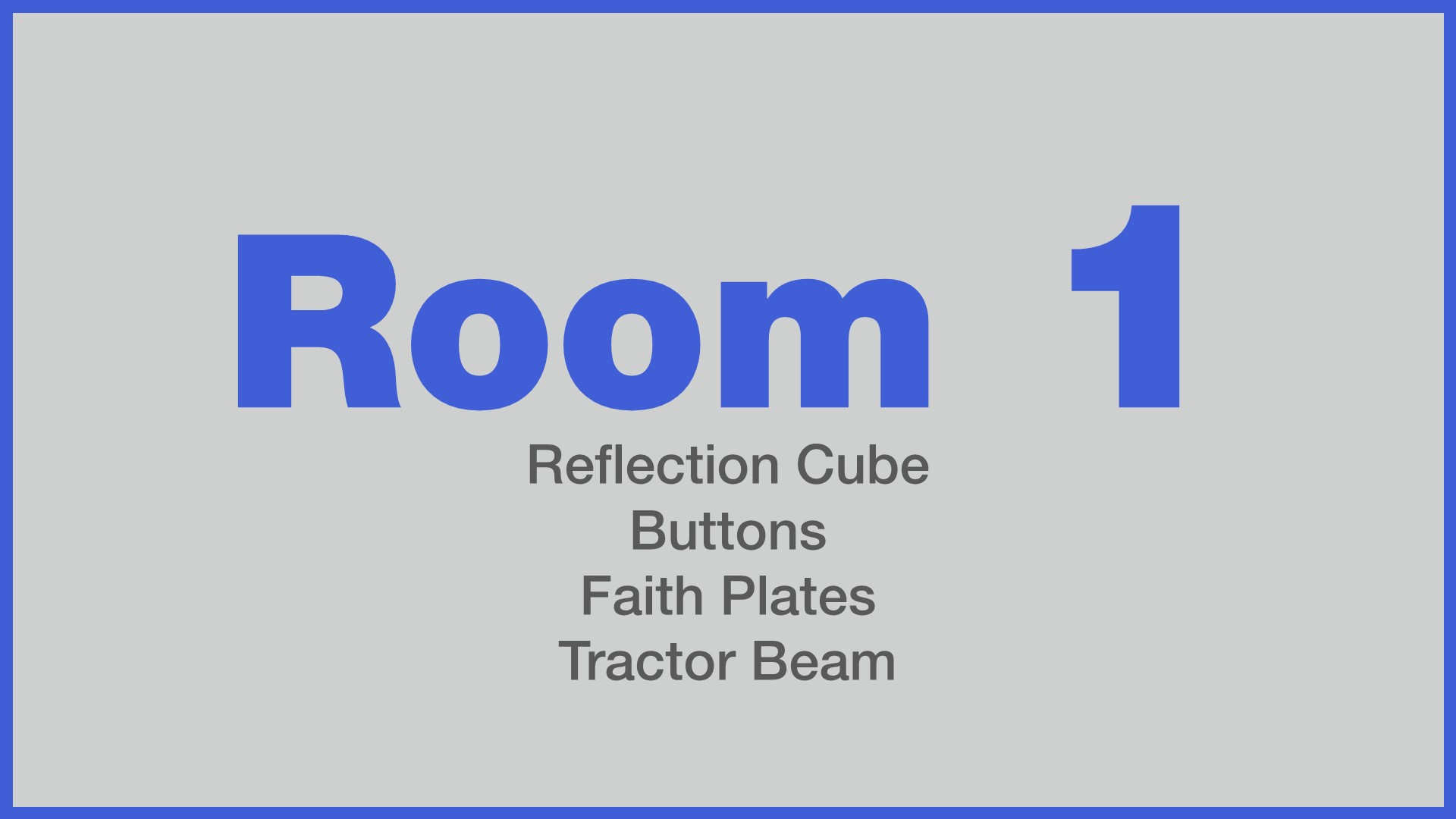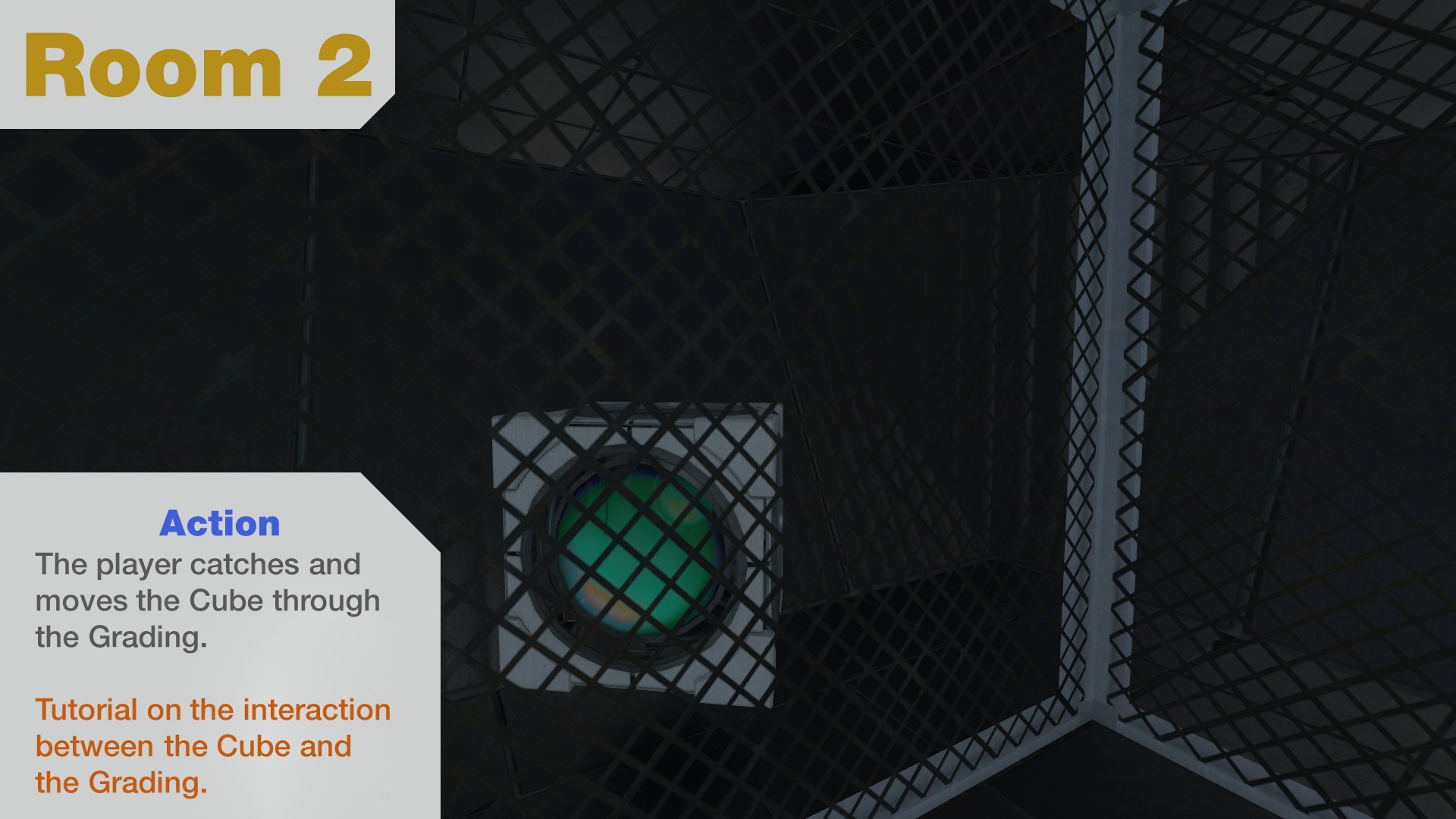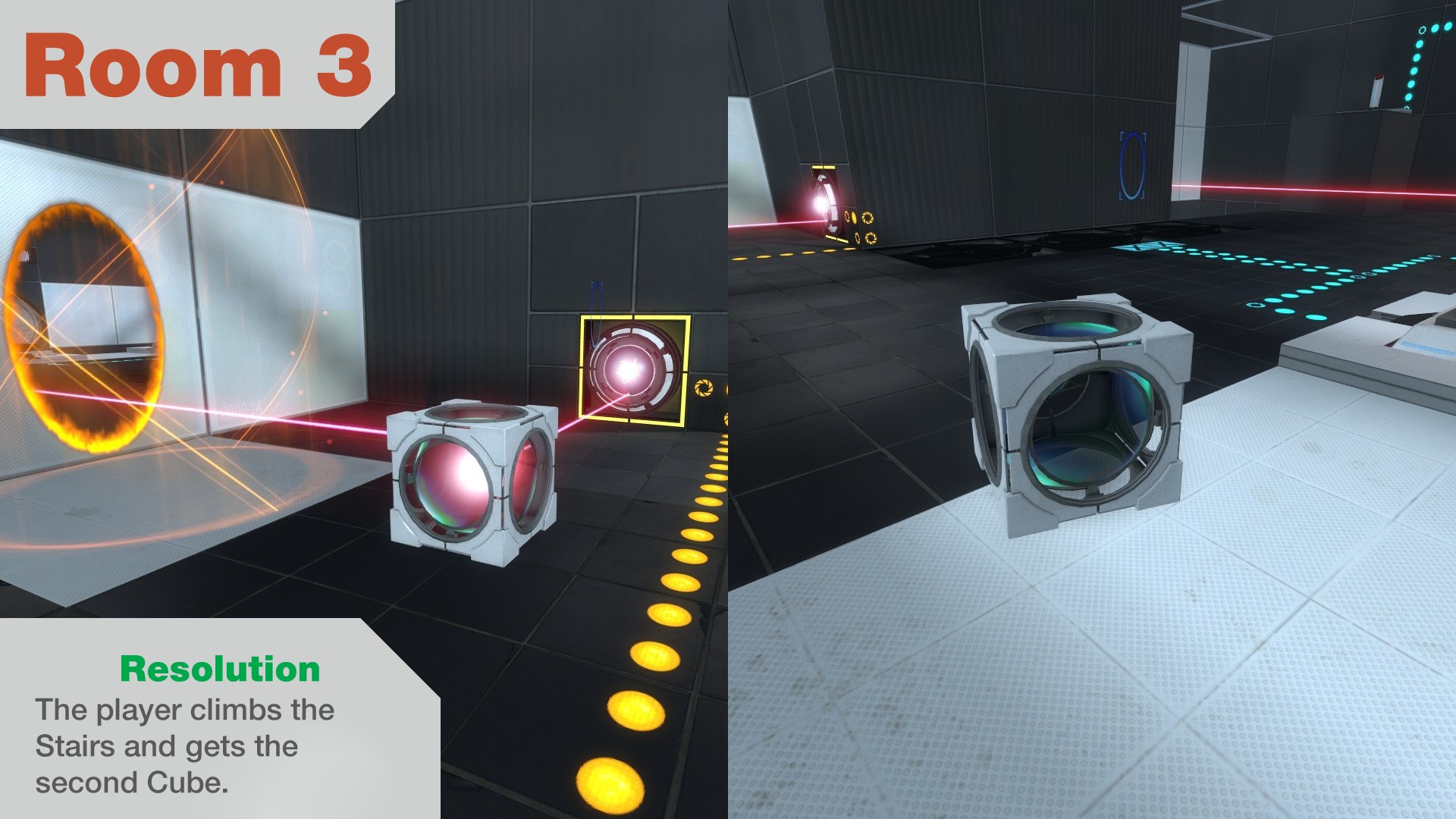Creation of a Portal 2 level:
«Reflection Tests»
Project breakdown
• Solo project
• Four production days
• Created using Puzzle Maker and BEEmod
• Focus on one mechanic, the Reflection Cube
It's better to continue reading on this page
Intentions
Time was limited, I needed solid pillars to start the production.
Experimentation
During the level, I wanted to push the player to experiment. The puzzles use physics and timing, but above all push for creativity.
Create a twist
When the player's experimentation was successful, I wanted there to be a twist in its success. It is when the player thinks they have completed a room that a final puzzle takes place.
The Reflection Cube
I have chosen the Reflection Cube as the main brick, because of its multiple interactions with other objects like Lasers or Tractor Beams.
Three different rooms
To create a clear progression.
There are three rooms, each with an increasing number of different elements. The goal is to create a progression in the number of actions required and in the knowledge of the Reflection Cube's interactions.
One cube, multiples interactions
Which allowed me to make a variety of puzzles.
A shared puzzle design
To avoid losing the player.
1. Problem
The exit door is visible at first sight but the player faces and identifies a problem to reach it.
3. Action
The player makes a first action.
Sometimes the actions serve as a tutorial on possible interactions between the Reflection Cube and other elements.
5. New action
The new action of the player considering the twist.
Start

Exit
2. Observation
The player analyzes their environment to find the beginning of a solution.
4. Twist
The action performed is not solving the problem, but gives clues for the real solution. The player must apprehend the puzzle in a different way.
6. Resolution
The problem is solved.
A shared puzzle design
To avoid losing the player.
1. Problem
The exit door is visible at first sight but the player faces and identifies a problem to reach it.
2. Observation
The player analyzes their environment to find the beginning of a solution.
3. Action
The player makes a first action.
Sometimes the actions serve as a tutorial on possible interactions between the Reflection Cube and other elements.
4. Twist
The action performed is not solving the problem, but gives clues for the real solution. The player must apprehend the puzzle in a different way.
5. New action
The new action of the player considering the twist.
6. Resolution
The problem is solved.
Complete level breakdown
With step-by-step explanations.
Complete level breakdown
With step-by-step explanations.
An iterative process
Even though the timing was short, I had to iterate.
An iterative process
Even though the timing was short, I had to iterate.
Readability over visuals
Clarity as the most important element.


I started with a stylized theme, but after several playtests, I realized that the basic theme was much more suitable for understanding the level.
Readability over visuals
Clarity as the most important element.


I started with a stylized theme, but after several playtests, I realized that the basic theme was much more suitable for understanding the level.
Level gameplay video
Reflections
Game wise
Portal is a puzzle game and is not based on the player's execution. The character is not made to go fast on the ground and perform actions quickly.
It is therefore necessary to avoid making puzzles based on the speed of execution at the risk of potentially frustrating the player.
Design wise
I wanted to try to have a unique feature in my level, but I realized that I was wasting time thinking and that it wasn't even fun. I preferred to use basic mechanics rather than creating average ones.
Using the game's basic bricks, with a progression in learning and difficulty, worked well for this kind of short challenge in a level editor, and I'll try to remember this lesson for future projects.
Project wise
At the end of this short project and my first experience with this editor, I'm satisfied with what I've been able to produce. I had set myself an object around which to create a level, and I think I've succeeded in that challenge.
Feedback from the few testers is good, although the level would have been better with more tests. On Steam Workshop, the level has 14 ratings, 12 of which are positive.
Reflections
Game wise
Portal is a puzzle game and is not based on the player's execution. The character is not made to go fast on the ground and perform actions quickly. It is therefore necessary to avoid making puzzles based on the speed of execution at the risk of potentially frustrating the player.
Design wise
I wanted to try to have a unique feature in my level, but I realized that I was wasting time thinking and that it wasn't even fun. I preferred to use basic mechanics rather than creating average ones. Using the game's basic bricks, with a progression in learning and difficulty, worked well for this kind of short challenge in a level editor, and I'll try to remember this lesson for future projects.
Project wise
At the end of this short project and my first experience with this editor, I'm satisfied with what I've been able to produce. I had set myself an object around which to create a level, and I think I've succeeded in that challenge. Feedback from the few testers is good, although the level would have been better with more tests. On Steam Workshop, the level has 14 ratings, 12 of which are positive.
Selected Works



















































